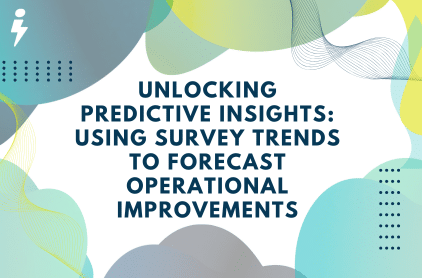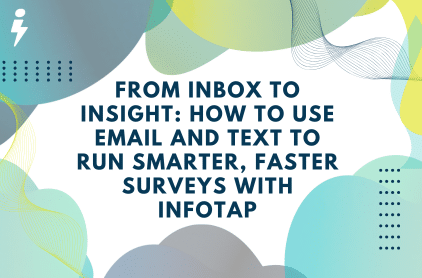A Practical Guide to Turning Feedback into Real Business Impact
You built and launched a survey. People responded. You have the data. But now what?
This is where most businesses stall. A file full of responses is nice—but insight without action is just noise. Whether you’re surveying customers, employees, or event attendees, what happens after the responses come in is what separates great organizations from everyone else.
Here’s a step-by-step guide to help you get the most out of your survey results—from cleanup to follow-through.
Step 1: Clean and Organize the Responses
Before you dive into interpretation, make sure your data is clean.
Remove junk responses: Look for incomplete entries, clearly random answers (like “asdfgh” in an open text field), or duplicates. If you see patterns of bots or bad data, filter them out.
Normalize entries: Standardize formatting. For example, make sure “California,” “CA,” and “calif.” are grouped together.
Consolidate open-ended responses: For free-text questions, group similar responses into categories. This makes it easier to quantify later.
Step 2: Segment Your Audience
Don’t treat your respondents as one giant group. Break your results down into meaningful segments, such as:
New vs. returning customers
First-time attendees vs. season ticket holders
Employees by department or location
Segmentation helps you see who is feeling what—not just what the average sentiment is. It lets you tailor follow-up actions to the right groups, instead of making blanket changes.
Step 3: Identify Key Themes and Insights
Now you’re ready to interpret the results.
Look for:
Consistent trends: Are multiple people mentioning the same pain point?
Outliers: Is there a surprising piece of feedback that could reveal a hidden opportunity?
Sentiment: Is the tone mostly positive, negative, or neutral? This matters just as much as the actual answers.
For longer surveys, try organizing insights into categories like:
Product feedback
Customer service experience
Pricing perception
Brand perception
This helps you connect feedback to the right team internally.
Step 4: Visualize What Matters
Turning raw data into visuals helps teams—and leadership—understand the story at a glance.
Use:
Bar and pie charts for multiple-choice and rating scale responses
Word clouds to highlight themes in open-text feedback
Dashboards to track results over time or by audience segment
✅ With Infotap, every survey includes its own performance dashboard—no extra setup required.
Step 5: Take Smart, Measurable Action
The most important question to ask now: What are we going to do with this?
Some actions might be quick wins—like changing signage at an event based on confusion reported in the survey. Others might be long-term, like investing in product improvements based on repeated user feedback.
Tie each action to:
A specific insight
A responsible team or owner
A timeline
A way to measure impact
Even a simple internal roadmap shows that the feedback is being heard and used.
Step 6: Close the Loop with Respondents
Letting people know that you heard them is powerful—and often overlooked.
Try:
A “You said, we did” email showing changes made based on survey results
A thank-you message with a summary of the top findings
Internal updates to employees about how team feedback is being acted on
This step builds trust, encourages future participation, and strengthens relationships.
Recap: Turning Survey Data Into Progress
Here’s the flow:
Clean your data
Segment your audience
Analyze for insights
Visualize key trends
Take measurable action
Close the loop
Too many businesses stop at step 1. But the value of a survey isn’t in the answers—it’s in what you do with them.
Infotap Makes This Easier
Infotap was built for more than just survey creation. With real-time results, easy visualizations, smart filters, and integrations with Microsoft Dynamics and Power BI, we help you go from feedback to action—fast.
Ready to put your survey data to work? Book a quick demo and let us show you how.







